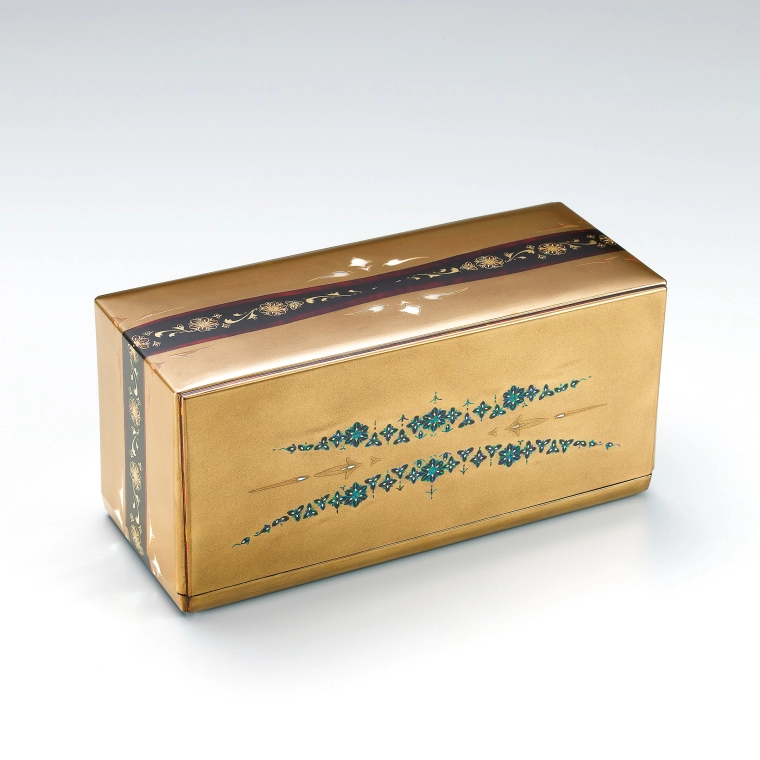Jewelry Box with Design in Makie, Tortoiseshell Applying and Mother-of-pearl inlay "Eternity"
H 12.7 x W 26.5 x D 11.0 cm,Year.2013Yasuhiro Asai
1983 -- Lacquerware
-
Price Range
$12,000 - 70,000
Info
The prices of the artworks on Gallery Japan are determined by the artists themselves and are published directly on the website.
close - Awards at Japan Kōgei Assoc. Exhibitions : 6
About the Artwork
A jewelry box with two tiers inside.
The whole box is finished in gold, using aogai (mother-of pearl inlay) and kirikane for the patterns.
Description
-
CategoryLacquerware
-
DimensionsH 12.7 x W 26.5 x D 11.0 cm
-
Year presented2013
-
RarityUnique
-
Paulownia BoxIncluded
-
InstructionsTo clean, wash with a soft sponge and wipe with a dry cloth.
As lacquerware is vulnerable to UV rays, avoid direct sunlight and store in the paulownia box when not in use to keep the artwork in good condition.
Techniques Used
Maki-e
Maki-e (literally “sprinkled pictures”) is a representative lacquerware technique that originated in Japan around 1,200 years ago. Maki-e is done by painting lacquer motifs on the surface of a piece using a fine brush and then sprinkling gold powder onto the lacquer before it hardens, producing luxurious decorations.
Metal sheet inlay
Metal sheet inlay (hyōmon) is a technique that involves cutting shapes out of thin sheets of gold, silver, or other metals to create an inlay motif.
Mother-of-pearl inlay (Raden)
Mother-of-pearl inlay (Raden) is a decorative technique that uses the iridescent inner layer of abalone shell, turban shell, pearl oyster shell, or other mollusk shells. The technique came to Japan from China 1,300 years ago, and pieces featuring mother-of-pearl inlay are included among the artifacts at the Shōsōin Repository in Nara.
Selected exhibitions
- The 60 th Japan Traditional Kōgei Exhibition (2013)
- Selected
Please feel free to contact us to commission work, check artworks available for purchase etc.

